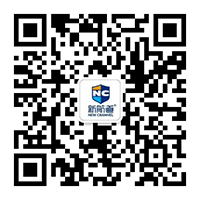托福TPO57听力原文+题目+答案解析:Listening L2
托福TPO试题基本所有参加托福考生必做试题,在下文中上海新航道托福培训小编整理了托福TPO57听力原文+题目+答案解析:Listening L2,希望对大家有所帮助!
TPO57Listening L2听力原文+题目
1. What is the lecture mainly about?
A. The formation and physical characteristics of craters
B. Methods for determining the age of impact craters
C. Differences between craters on planets and moons in the inner solar system
D. Problems with using craters to date surfaces of planets and moons
2. Why does the professor mention rocks from Earth's moon?
A. To compare the surface of Earth's moon to the surface of a moon of Jupiter
B. To stress the need for further exploration of space
C. To explain a way of calculating the absolute age of surfaces of planets or moons
D. To show how to identify a secondary impact on the surface of Earth's moon
3. According to the professor, what are secondary impacts?
A. Impacts of fragments thrown outward by a previous impact
B. Impacts of objects from outside the asteroid belt
C. Impacts of smaller asteroids in the asteroid belt
D. Impacts in areas of a moon or planet other than those primarily studied
4. According to the professor, what do scientists consider when trying to determine whether an impact was primary or secondary?
Click on 2 answers.
A. The size of the crater
B. The shape of the crater
C. The crater's location in relation to other craters
D. The age of the crater
5. Based on observations of the crater Zuni!, what does the professor imply are more common than previously believed?
Click on 2 answers.
A. Small objects moving rapidly through space
B. Craters caused by secondary impacts on Earth' s moon
C. Lava flows on the surfaces of planets and moons
D. Secondary impacts resulting from a single primary impact
6. What does the professor imply about information obtained from space probes?
A. The information was probably distorted during transmission to Earth
B. The information helped determine the age of most planetary surface features.
C. Some of the information is at present difficult to interpret correctly
D. The information applies only to the moons of Jupiter.
相关推荐:托福TPO57听力原文+题目+答案解析:Listening L1
索取“完整原文+题目+答案+解析+MP3音频”,请加新航道上海老师微信(shnc_2018)

TPO57听力译文+题目
1.讲座主要讲什么?
A、 陨石坑的形成及其物理特征
B、 测定撞击坑年龄的方法
C、 太阳系内行星和卫星陨石坑的区别
D、 用陨石坑测定行星和卫星表面的年代存在的问题
2.为什么教授提到来自月球的岩石?
A、 比较地球的月球表面和木星的卫星表面
B、 强调进一步探索太空的必要性
C、 解释一种计算行星或卫星表面年龄的方法
D、 演示如何识别对地球月球表面的二次撞击
3.教授说,什么是次要影响?
A、 前一次撞击抛出的碎片的影响
B、 小行星带外物体的撞击
C、 小行星带中较小小行星的撞击
D、 月球或行星上除主要研究区域外的其他区域的撞击
4.根据教授的说法,当科学家试图确定撞击是主要还是次要时,他们会考虑什么?
2个答案。
A、 陨石坑的大小
B、 陨石坑的形状
C、 陨石坑相对于其他陨石坑的位置
D、 陨石坑的年代
5.根据对祖尼火山口的观察!,教授的意思是什么比以前认为的更普遍?
2个答案。
A、 小物体在太空中快速移动
B、 月球二次撞击造成的陨石坑
C、 行星和卫星表面的熔岩流
D、 由单一主要影响引起的次要影响
6.教授对从太空探测器获得的信息有什么暗示?
A、 信息可能在传输到地球的过程中被扭曲了
B、 这些信息有助于确定大多数行星表面特征的年龄。
C、 有些信息目前很难正确解释
D、 这些信息只适用于木星的卫星。








